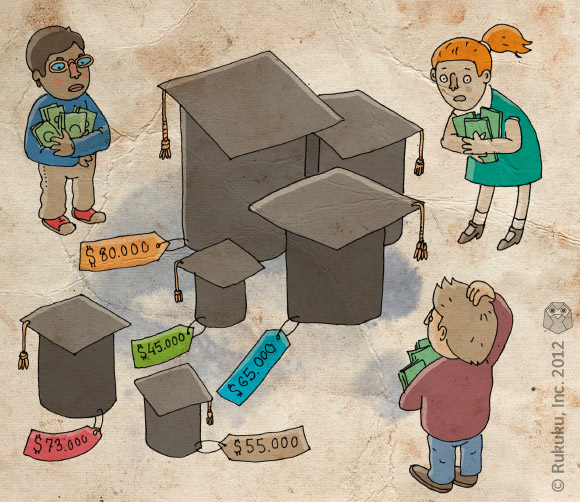Why is the real cost of higher education so much higher for today’s students than it was for their parents or grandparents? Why does it continue to skyrocket, far outpacing official inflation figures?
Demand. These days, it seems you can’t get anywhere without higher education. Inexplicably, many jobs that do not use the skill set provided by a college education still require a bachelor’s degree. For this and many other reasons, demand for higher education is at an all-time high. The supply, on the other hand, has not kept pace. This translates to rising prices. As selectivity goes up due to an ever-broader pool of qualified applicants, costs go up.
Student loans and federal aid. It may be odd to hear, but federal student aid has been shown to drive up tuition fees. Universities feel much more comfortable charging exorbitant fees when the government is willing to guarantee that students will pay them (and then spend half a lifetime paying off the debt). The extent to which this is a factor is a topic of heated debate, but the paradoxical fact remains: before student loans came into existence, it was possible for most people to afford college without them.
Rising spending by institutions. This may be a consequence of higher revenue rather than a cause, but it’s worth mentioning nonetheless. Universities are paying their professors and staff more than ever before, and they’re also hiring more people than ever before. They’re also spending record amounts of money on their real estate: nice gyms, activity centers, recreational facilities, and so on.
Resistance to change. There are many cost-cutting measures available to universities. For example, York College in Pennsylvania has proven that, with minor adjustments in administrative culture and smarter allocation of resources, it’s possible to provide students with a private, four-year education for about half the cost of its competitors. This being a tech blog, it’s also meaningful to point out that there are many ways in which technology can help institutions to cut costs and lower their prices. The problem is that most universities are quite happy with what they have. And who can blame them when they’re rolling in cash?
What do you think about the exorbitant costs of college education? Leave us your thoughts in the comments section, and check back in a few days for an overview of some exciting technological solutions to the cost problem.





